-
tel : +8618150976625
-
E-mail : Hello@MicrofiberLeather.com
tel : +8618150976625
E-mail : Hello@MicrofiberLeather.com
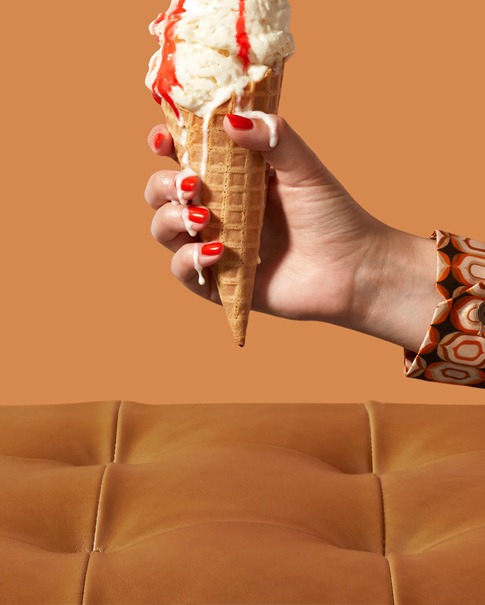
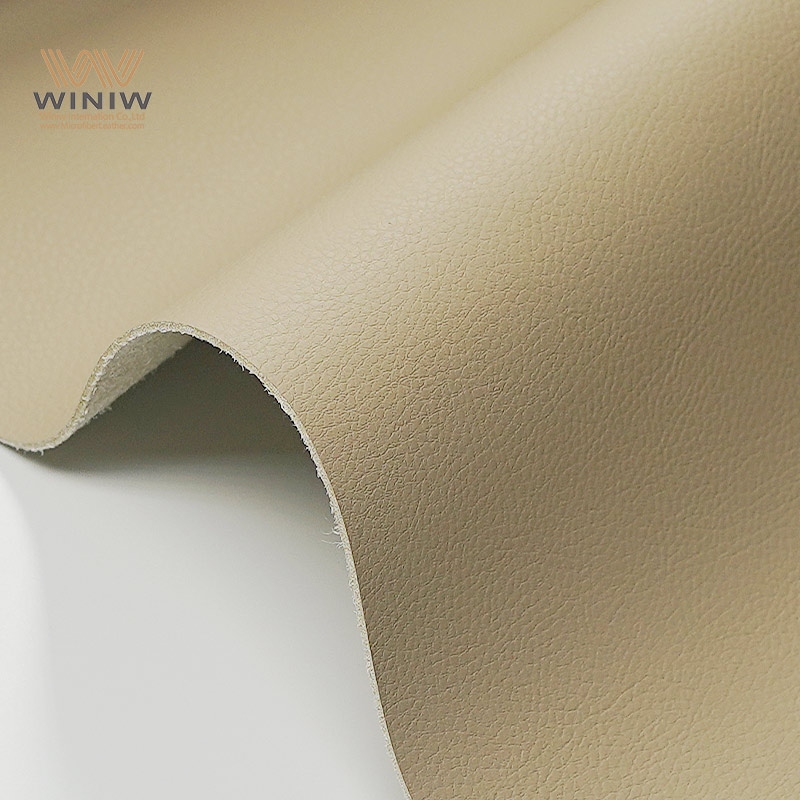
Quando confronto pelle PU Rispetto alla vera pelle, ho notato che la vera pelle dura più a lungo nell'uso quotidiano. Le fibre naturali della vera pelle resistono alle screpolature e sviluppano una ricca patina nel tempo. Noto che la similpelle mostra spesso segni di usura, come desquamazione o scolorimento, soprattutto se maneggiata frequentemente. Pelle Materiale PU Offre una superficie liscia, ma la vera pelle mantiene molto meglio la sua durevolezza e il suo aspetto classico. La mia esperienza dimostra che la vera pelle invecchia con eleganza, mentre la pelle sintetica ha difficoltà a durare a lungo.
La vera pelle dura molto più a lungo della pelle PU, spesso superando i 10 anni con la dovuta cura.
La pelle PU dura in genere da 1 a 3 anni e mostra prima segni di usura come screpolature e desquamazioni.
La vera pelle sviluppa nel tempo una patina unica, che ne accresce la bellezza e il valore.
La pelle PU è più facile da pulire e mantenere, il che la rende adatta agli oggetti di uso quotidiano e alle famiglie più impegnate.
Considerate l'impatto ambientale: la pelle PU utilizza meno risorse animali ma si basa su materiali sintetici.
La vera pelle richiede una maggiore manutenzione, tra cui un trattamento regolare per evitare che si secchi e si screpoli.
Scegli la pelle PU per soluzioni più economiche, ma aspettati di dover sostituire gli articoli più frequentemente.
Per una qualità e un lusso duraturi, la vera pelle è l'investimento migliore, nonostante il costo iniziale più elevato.
Quando uso prodotti in pelle PUHo notato che durano solitamente da 1 a 3 anni con un uso regolare. Il materiale in pelle sintetica (PU) ha spesso un bell'aspetto quando è nuovo, ma la sua superficie sintetica non ha la stessa resistenza delle pelli naturali. Ho notato che gli articoli in pelle sintetica, come borse o mobili, iniziano a mostrare segni di usura molto prima di quelli in vera pelle. La durata del materiale in pelle sintetica (PU) dipende dallo spessore del rivestimento e dalla qualità del processo di fabbricazione, ma anche le versioni di alta qualità raramente raggiungono la longevità della vera pelle.
Nella mia esperienza, i problemi più comuni della pelle sintetica includono screpolature, desquamazioni e scolorimento. Ho visto il materiale in pelle sintetica iniziare a sfaldarsi dopo l'esposizione alla luce solare o dopo frequenti piegature. Lo strato sintetico può separarsi dal supporto in tessuto, soprattutto nelle aree soggette a forte stress come i cuscini dei sedili o i manici delle borse. A differenza della vera pelle, la pelle sintetica non può sviluppare una patina protettiva. Al contrario, tende a perdere il suo aspetto e la sua consistenza originali nel tempo. Spesso consiglio ai clienti di aspettarsi segni visibili di invecchiamento entro pochi anni, soprattutto se l'articolo viene utilizzato intensamente.
Vera pelle Si distingue per la sua straordinaria durata. Ho posseduto prodotti in vera pelle che sono durati decenni. Le fibre naturali della vera pelle offrono resistenza e flessibilità, consentendole di resistere all'usura quotidiana. Confrontando il materiale in pelle sintetica con la vera pelle, noto che la vera pelle offre costantemente prestazioni superiori in termini di durata. Con la cura adeguata, gli articoli in vera pelle possono rimanere funzionali e belli per 10 anni o più.
Una delle caratteristiche più notevoli della vera pelle è la sua capacità di sviluppare una patina. Nel tempo, la pelle pieno fiore mantiene lo strato superiore della pelle, che ne aumenta la resistenza e la durevolezza. Apprezzo il modo in cui le venature e le imperfezioni naturali diventano più pronunciate, conferendo a ogni pezzo un carattere unico. Il processo di invecchiamento porta alla formazione di una ricca patina, che non solo esalta l'aspetto della pelle, ma ne segnala anche la qualità e la longevità. A differenza della pelle sintetica, che si deteriora con il tempo, la vera pelle diventa più bella e preziosa.
La pelle pieno fiore conserva lo strato superiore della pelle, contribuendo a conferire resistenza e durevolezza.
Le venature naturali e le imperfezioni ne esaltano il carattere e il fascino.
La patina che si forma nel tempo è indice di qualità e prestazioni durature.
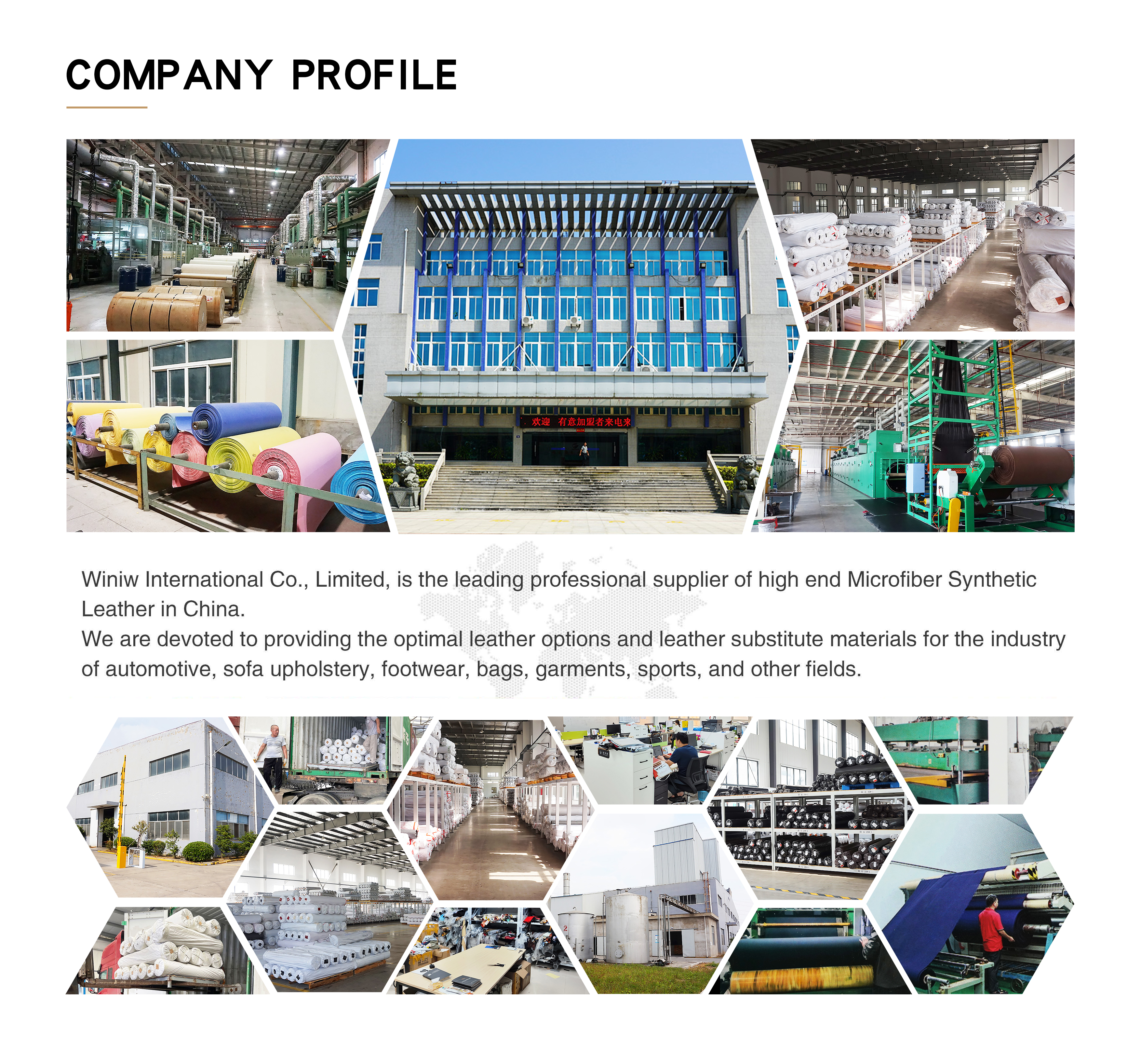
Le condizioni ambientali giocano un ruolo significativo nella durata del materiale in pelle PU e della vera pelle. Ho osservato che l'esposizione alla luce solare, all'umidità e agli sbalzi di temperatura può accelerare l'usura di entrambi i materiali, ma gli effetti sono diversi.
Impatto ambientale | Impatto sulla durata | |
|---|---|---|
Concia al vegetale | Ecologico ma costoso. | Garantisce una durevolezza naturale. |
Concia al cromo | Efficiente, produce pelle flessibile, ma richiede un adeguato trattamento ambientale. | Migliora la flessibilità e la durata. |
Abbronzatura combinata | Unisce metodi per bilanciare morbidezza e durata. | Offre un equilibrio di entrambe le qualità. |
Pelle sintetica PU | Può utilizzare resine ecocompatibili e processi senza solventi, riducendo le emissioni di carbonio. | Generalmente meno durevoli di quelli originali. |
vera pelle | La produzione zootecnica è naturale, ma ha un impatto sul territorio, sull'acqua e sulle emissioni di carbonio. | Molto durevole ma rispettoso dell'ambiente. |
Ho notato che il materiale in pelle sintetica può trarre vantaggio da metodi di produzione ecocompatibili, ma non raggiunge comunque la durevolezza della vera pelle. La vera pelle, soprattutto se conciata al vegetale, offre una durevolezza naturale, ma comporta costi ambientali.
Il modo in cui mi prendo cura dei miei articoli in pelle fa una grande differenza nella loro durata. Consiglio sempre di tenere il materiale in pelle sintetica lontano dalla luce solare diretta e dall'umidità, poiché questi possono causare screpolature o sfaldature della superficie sintetica. Una pulizia regolare con un panno umido aiuta a mantenerne l'aspetto, ma evito prodotti chimici aggressivi che possono danneggiarne la finitura.
Per la vera pelle, utilizzo detergenti e balsami specifici per mantenerla morbida. I balsami impediscono alla pelle di seccarsi e screpolarsi. Conservo i prodotti in vera pelle in luoghi freschi e asciutti ed evito di sovraccaricare le borse o di allungare il materiale. Con una cura costante, ho scoperto che la vera pelle continua a migliorare con il tempo, mentre la pelle sintetica richiede sostituzioni più frequenti.
Spesso analizzo la composizione dei materiali prima di consigliarli ai clienti. La pelle PU è costituita da un tessuto Base rivestita in poliuretano, un polimero sintetico. I produttori applicano questo rivestimento per creare una superficie liscia e uniforme che imita l'aspetto della pelle animale. Ho notato che la pelle PU è priva delle fibre naturali presenti nella vera pelle. La vera pelle deriva da pelli animali, solitamente bovine, e mantiene la grana e la struttura originali. Questa composizione naturale conferisce alla vera pelle resistenza e flessibilità. Confrontando le due, noto che la pelle PU si basa su strati artificiali, mentre la vera pelle offre una solida base organica.
Caratteristica | Pelle PU | vera pelle |
|---|---|---|
Materiale di base | Tessuto (poliestere o cotone) | Pelle di animale (solitamente pelle di mucca) |
Rivestimento superficiale | poliuretano | Nessuno (grano naturale) |
Struttura della fibra | Sintetico, uniforme | Naturale, vario |
La traspirabilità gioca un ruolo cruciale nel comfort e nelle prestazioni. Trovo che la pelle PU non lascia passare l'aria di passare facilmente. Il rivestimento in poliuretano crea una barriera che intrappola calore e umidità. Questo può rendere la pelle sintetica scomoda per un contatto prolungato, soprattutto nei climi caldi. La vera pelle, invece, respira naturalmente. I pori della pelle permettono all'aria e all'umidità di circolare liberamente. Consiglio spesso la vera pelle per prodotti come scarpe e mobili perché rimane più fresca e risulta più confortevole nel tempo.
Suggerimento: se desideri un materiale che sia fresco e si adatti al tuo corpo, la vera pelle solitamente offre prestazioni migliori della pelle sintetica.
La texture distingue questi materiali al primo tocco. Noto che la pelle sintetica è liscia e omogenea. I produttori la progettano per apparire impeccabile, senza imperfezioni visibili. Questa uniformità piace a chi preferisce un look elegante e moderno. La vera pelle offre un'esperienza diversa. La superficie presenta venature naturali, cicatrici e rughe. Ogni pezzo è unico. Mi piace accarezzare la pelle sintetica perché la texture racconta la storia della sua origine. La pelle sintetica non può replicare questa autenticità, anche se cerca di imitarne l'aspetto.
L'invecchiamento modifica l'aspetto di entrambi i materiali in modi distinti. Ho notato che la pelle sintetica tende a deteriorarsi con il passare del tempo. La superficie può screpolarsi, sfaldarsi o sbiadire, soprattutto con un uso frequente. Raramente migliora nel tempo. La vera pelle sviluppa una patina, che ne esalta la bellezza. Il colore si intensifica e la superficie diventa più morbida e ricca. Apprezzo il modo in cui la vera pelle invecchia con eleganza, acquisendo carattere anno dopo anno. La pelle sintetica, al contrario, spesso necessita di essere sostituita quando mostra segni di usura.
La pelle PU mantiene un aspetto uniforme quando è nuova, ma ha difficoltà a invecchiare bene.
La vera pelle si evolve, diventando più attraente e preziosa man mano che invecchia.
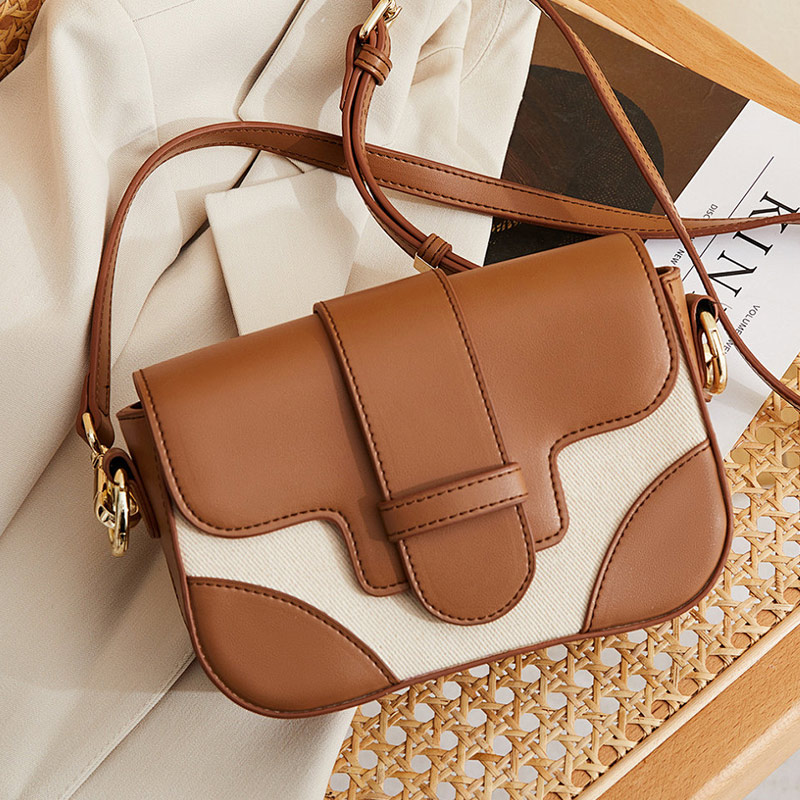
Quando valuto la pelle sintetica, noto diversi punti di forza che la rendono popolare per i prodotti di uso quotidiano. La pelle sintetica offre una superficie uniforme che resiste a piccoli graffi e macchie. Ecopelle Resiste bene alle fuoriuscite perché la pelle sintetica non assorbe l'acqua. Consiglio spesso la pelle sintetica per oggetti che devono apparire puliti e lucidi, come borse o sedili per auto. Pelle vegana Le opzioni offrono un'alternativa cruelty-free, che piace a molti clienti. Trovo che la pelle sintetica mantenga la sua forma meglio di alcuni materiali naturali, soprattutto se utilizzata in accessori strutturati.
Nonostante questi punti di forza, la pelle PU ha debolezze notevoliHo visto la pelle sintetica screpolarsi e sfaldarsi dopo solo pochi anni di utilizzo. La pelle sintetica ha difficoltà a durare a lungo, soprattutto se esposta alla luce solare o all'umidità. Riempire troppo uno zaino La pelle sintetica danneggia il materiale, causandone la rottura. La luce solare diretta può sbiadire e danneggiare la superficie. Ignorare l'umidità può causare desquamazioni o deformazioni. L'uso di detergenti aggressivi rimuove i rivestimenti protettivi e abitudini di conservazione improprie creano pieghe permanenti. Consiglio ai clienti di aspettarsi segni di usura visibili prima rispetto alla vera pelle.
Apprezzo la facilità di pulizia della pelle sintetica. Le superfici in similpelle si puliscono con un panno umido e la maggior parte delle macchie non penetra nel materiale. La pelle sintetica è generalmente più economica da mantenere perché non richiede ammorbidenti o trattamenti speciali. Consiglio spesso la pelle sintetica per le case più frequentate o per le aree ad alto passaggio. Anche i prodotti in pelle vegana traggono vantaggio da semplici routine di pulizia, il che li rende pratici per l'uso quotidiano.
Tuttavia, la pelle sintetica rimane sensibile a determinate condizioni. Ho imparato che un'umidità eccessiva può causare desquamazione o deformazione. I detergenti aggressivi danneggiano la finitura e l'esposizione prolungata alla luce solare può causare scolorimento e screpolature. Ricordo sempre ai clienti di evitare di riempire eccessivamente le borse o di conservare gli oggetti in ambienti umidi. La pelle sintetica necessita di cure delicate per mantenere il suo aspetto. Una conservazione impropria può causare deformazioni e, una volta danneggiata, la pelle sintetica non può essere restaurata come la pelle vera.
Suggerimento: conservare i prodotti in pelle PU in luoghi freschi e asciutti ed evitare prodotti chimici aggressivi per prolungarne la durata.
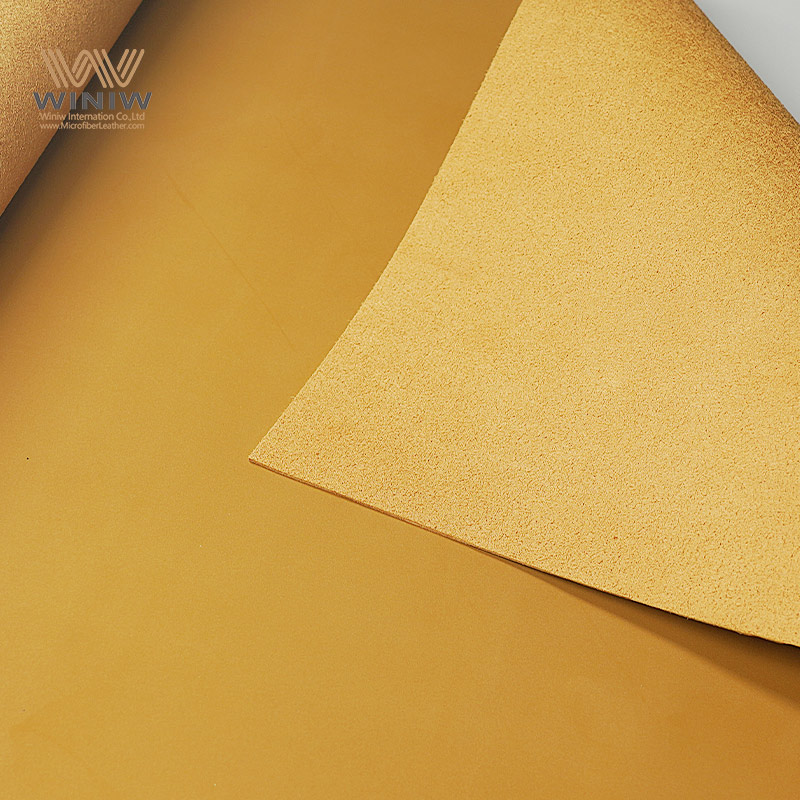
Uno dei maggiori vantaggi che vedo è che la pelle PU costa meno della vera pelle. I prodotti in similpelle e pelle sintetica offrono un opzione economica Per chi desidera l'aspetto della pelle senza spendere troppo. La pelle sintetica è generalmente più economica, rendendola accessibile a studenti, famiglie e chiunque cerchi stile senza spendere troppo.
Sebbene la pelle sintetica offra un risparmio iniziale, ho notato che il suo valore a lungo termine può essere limitato. La pelle sintetica spesso necessita di sostituzione dopo alcuni anni a causa di screpolature o desquamazioni. La pelle sintetica non sviluppa patina né migliora con il tempo. Consiglio ai clienti di valutare l'economicità iniziale rispetto alla probabilità di dover sostituire gli articoli prima del previsto. Vegano pelle e pu la pelle soddisfa le esigenze a breve termine, ma la vera pelle resta l'investimento migliore per la longevità.
Caratteristica | Pelle PU (finta/sintetica) | vera pelle |
|---|---|---|
Costo iniziale | Inferiore | Più alto |
Costo di manutenzione | Minimo | Moderare |
Durata | 1-3 anni | 10+ anni |
Invecchiamento | Crepe, sbucciature | Forme di patina |
Quando considero l'impatto ambientale della pelle PU, vedo sia vantaggi che svantaggi. I produttori creano la pelle PU utilizzando un rivestimento a base di plastica, solitamente poliuretano, applicato su un supporto in tessuto. Questo processo utilizza meno risorse animali rispetto alla produzione di vera pelle. Ho notato che alcuni marchi ora utilizzano metodi a base d'acqua o privi di solventi, che riducono le emissioni nocive. Questi miglioramenti rendono la pelle PU più attraente per chi cerca opzioni ecocompatibili.
Tuttavia, riconosco che la pelle PU si basa ancora su sostanze chimiche a base di petrolio. Il processo di produzione può rilasciare nell'aria composti organici volatili (COV). Anche lo smaltimento presenta delle sfide. La pelle PU non si biodegrada rapidamente. I vecchi articoli finiscono spesso in discarica, dove persistono per molti anni. Le opzioni di riciclo rimangono limitate, quindi consiglio sempre ai clienti di considerare l'intero ciclo di vita dei loro prodotti.
Nonostante questi problemi, ritengo che la pelle PU possa essere migliore in termini di sostenibilità in alcuni casi. Quando i produttori utilizzano materiali riciclati o adottano tecniche di produzione più pulite, l'impatto ambientale complessivo si riduce. Incoraggio i clienti a cercare certificazioni o informazioni sul processo di produzione prima di effettuare un acquisto. Scegliere prodotti realizzati con materiali riciclati o sostanze chimiche a basso impatto ambientale contribuisce a ridurre i danni all'ambiente.
Nota: quando si acquista pelle PU, verificare sempre la presenza di etichette o certificazioni ecologiche. Queste etichette indicano un impegno verso una produzione responsabile.
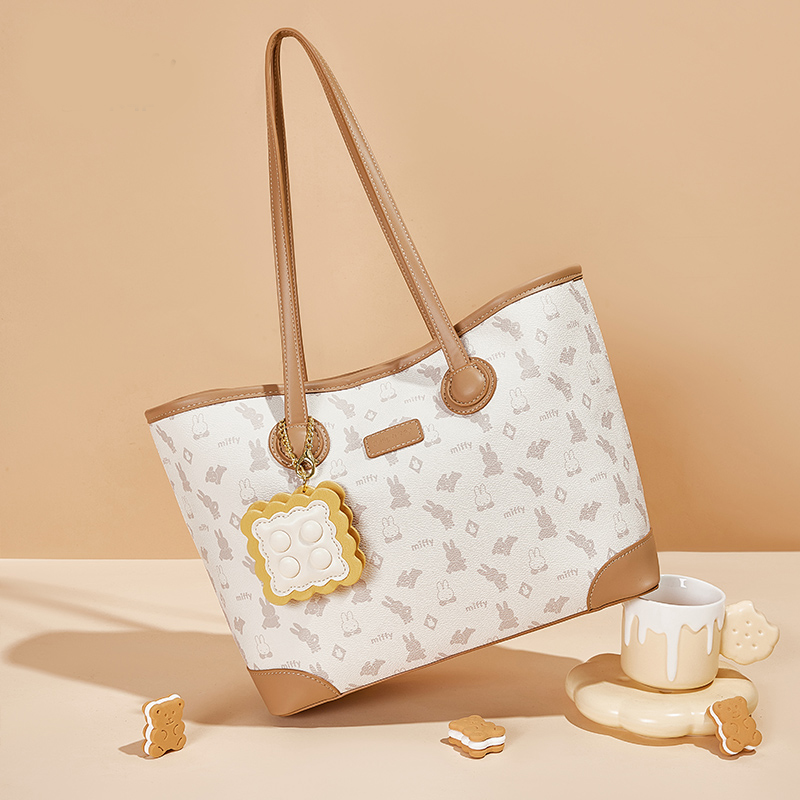
Uno dei motivi principali per cui consiglio la pelle PU è la sua natura "animal-free". Chi vuole evitare prodotti di origine animale spesso sceglie la pelle PU come sostituto della vera pelle. Il materiale non richiede pelli animali, quindi è apprezzato dai vegani e da chi è attento al benessere degli animali. Vedo molti marchi commercializzare i propri prodotti in pelle PU come "pelle vegana", il che attrae un gruppo crescente di consumatori consapevoli.
Ho notato che i prodotti senza ingredienti di origine animale spesso presentano meno problematiche etiche. Nessun animale viene danneggiato durante la produzione della pelle PU. Questo aspetto la rende una scelta popolare per scarpe, borse e mobili nelle case in cui i diritti degli animali sono importanti. Tuttavia, ricordo ai clienti che "senza ingredienti di origine animale" non significa sempre innocuo per l'ambiente. I materiali sintetici presenti nella pelle PU hanno comunque un impatto sul pianeta, soprattutto se non prodotti in modo responsabile.
In sintesi, la pelle PU offre un'alternativa pratica per chi desidera evitare prodotti di origine animale e ricercare soluzioni più sostenibili. Consiglio sempre di valutare i vantaggi dei materiali di origine animale rispetto ai costi ambientali della produzione sintetica.
Quando scelgo la vera pelle, noto sempre la sua straordinaria resistenza. Questo materiale resiste all'usura quotidiana meglio della maggior parte delle alternative. Ho posseduto borse e scarpe in pelle che sono durate anni senza perdere la loro forma o resistenza. Le fibre naturali della vera pelle offrono flessibilità, che aiuta a prevenire screpolature e spaccature. Col tempo, la superficie sviluppa una patina unica, rendendo ogni articolo più attraente con il passare del tempo. Apprezzo il fatto che la vera pelle possa resistere a un uso intenso e mantenere un aspetto migliore con il passare del tempo.
Nonostante i suoi punti di forza, la vera pelle presenta anche alcuni svantaggi. Ho notato che può macchiarsi facilmente, soprattutto se esposta a liquidi, perché la vera pelle assorbe l'acqua. Se non pulisco rapidamente eventuali macchie, il materiale può scurirsi o formare macchie. La vera pelle reagisce anche all'umidità e agli sbalzi di temperatura, che possono seccarla o irrigidirla. Senza una cura regolare, può screpolarsi o perdere la sua lucentezza. Mi ricordo sempre che, sebbene la vera pelle sia resistente, richiede attenzione per mantenere le sue migliori qualità.
Trovo che pulire la vera pelle richieda più impegno rispetto ai materiali sintetici. Uso un panno morbido e umido per rimuovere polvere e sporco. Per una pulizia più profonda, scelgo prodotti specifici per la pelle. Evito prodotti chimici aggressivi, poiché possono rimuovere gli oli naturali e danneggiare la superficie. Quando rovescio qualcosa, lo asciugo immediatamente perché la vera pelle assorbe l'acqua e potrebbe macchiarsi. Una pulizia regolare e delicata mantiene i miei articoli in pelle come nuovi e ne prolunga la durata.
Il condizionamento svolge un ruolo fondamentale nella conservazione della vera pelle. Seguo una routine che prevede l'applicazione di un balsamo per pelle ogni tre mesi. Nei climi secchi, applico un balsamo mensile per prevenire screpolature. Scelgo sempre balsami specifici per il mio tipo di pelle, come pieno fiore o scamosciata, per evitare danni accidentali. Ho imparato che usare una quantità minima di prodotto durante la manutenzione può prolungare significativamente la durata dei miei articoli. Prima di utilizzare un nuovo prodotto in pelle, applico un prodotto protettivo di qualità per proteggerlo da macchie e danni causati dall'acqua.
Suggerimento: un trattamento e una protezione costanti aiutano la vera pelle a rimanere morbida e bella per anni.
Quando acquisto vera pelle, mi aspetto di pagare di più rispetto alle opzioni sintetiche. Il prezzo riflette la qualità e la longevità del materiale. Nella mia esperienza, la pelle pieno fiore si colloca nella fascia di prezzo più alta, mentre la pelle pieno fiore offre un costo medio-alto. La pelle sintetica, al contrario, rimane molto più conveniente, ma non dura altrettanto a lungo.
Materiale | Fascia di prezzo tipica |
|---|---|
Pelle pieno fiore | Alto |
Pelle pieno fiore | Da moderato ad alto |
Pelle di poliuretano (PU) | Da basso a moderato |
Sebbene la vera pelle costa di più in anticipo, Lo vedo come un investimento intelligente. I miei articoli in pelle durano spesso più a lungo di diversi alternative sintetiche, risparmiando denaro nel tempo. La durevolezza superiore e l'aspetto classico rendono la vera pelle una scelta valida per gli articoli che intendo utilizzare per molti anni. Apprezzo il fatto che, con la cura adeguata, il mio investimento continui a ripagare man mano che la pelle invecchia e acquisisce carattere.
Quando considero la sostenibilità della vera pelle, vedo un quadro complesso. Il processo di produzione utilizza pelli animali, provenienti dall'industria della carne. I conciatori utilizzano sostanze chimiche per conservare e colorare le pelli. Alcune concerie utilizzano metodi a base vegetale, che riducono gli sprechi chimici, ma molte si affidano ancora alla concia al cromo. Questo metodo può generare rifiuti pericolosi se non gestito correttamente. Ho visitato concerie che seguono rigorosi standard ambientali, ma ho anche visto impianti che inquinano le fonti idriche locali.
Ho notato che la vera pelle dura molto più a lungo della maggior parte delle alternative sintetiche. Questa longevità significa meno sostituzioni e meno sprechi nel tempo. Quando acquisto un prodotto in pelle, mi aspetto che mi duri per molti anni. Considero questo un fattore positivo per la sostenibilità. Tuttavia, l'impatto ambientale iniziale rimane significativo. L'allevamento del bestiame richiede terra, acqua e foraggio. Il processo contribuisce alle emissioni di gas serra.
Ecco un rapido confronto dei fattori ambientali:
Fattore | vera pelle | Pelle PU |
|---|---|---|
Fonte di materia prima | pelli di animali | A base di petrolio |
Biodegradabilità | Alto (se non trattato) | Basso |
Impatto sulla produzione | Alto (bestiame, concia) | Moderato (sostanze chimiche) |
Longevità del prodotto | 10+ anni | 1-3 anni |
Nota: consiglio sempre di cercare prodotti in pelle provenienti da aziende che utilizzano metodi di concia ecocompatibili e fonti di approvvigionamento responsabili.
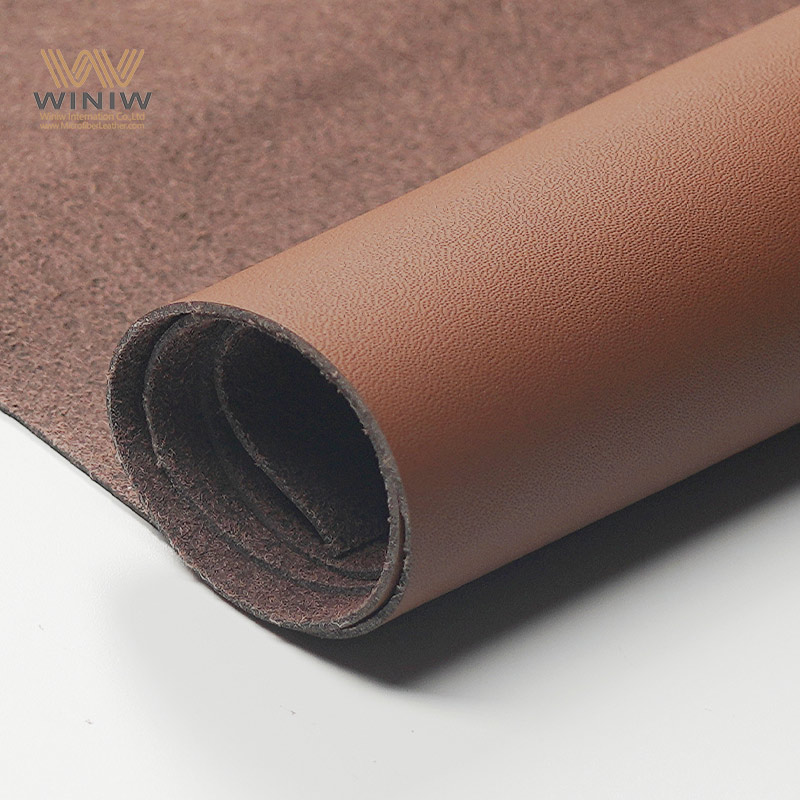
L'uso di animali è al centro del dibattito etico sulla vera pelle. So che ogni pezzo di vera pelle proviene dalla pelle di un animale, solitamente un sottoprodotto dell'industria della carne. Alcuni lo accettano, vedendolo come un modo per utilizzare l'animale intero. Altri si oppongono a qualsiasi utilizzo di prodotti di origine animale, indipendentemente dalla fonte.
Ho parlato con clienti che si sentono indecisi sull'acquisto di pelle. Vogliono durevolezza e qualità, ma hanno anche a cuore il benessere degli animali. Li incoraggio sempre a cercare marchi che diano priorità al trattamento umano e alla trasparenza. Certificazioni come quella del Leather Working Group possono aiutare a identificare i produttori responsabili.
Per chi evita completamente i prodotti di origine animale, la vera pelle non sarà mai la scelta giusta. Per questo motivo, esistono opzioni vegane e sintetiche. Rispetto queste preferenze e credo che le scelte consapevoli siano quelle che contano di più.
Suggerimento: se per te il benessere degli animali è importante, informati sulla provenienza e sulle certificazioni prima di effettuare un acquisto.
Consiglio spesso la pelle sintetica per prodotti che devono essere maneggiati frequentemente e che necessitano di una facile pulizia. Ho notato che la pelle sintetica si adatta bene a oggetti come portafogli, cinture e custodie per cellulari. La superficie resiste a piccole macchie e schizzi, il che la rende adatta a famiglie con un elevato numero di clienti. Ho notato che la pelle sintetica funziona meglio in ambienti in cui lo stile e la praticità contano più della durata a lungo termine. Scelgo la pelle sintetica per gli accessori che voglio sostituire ogni pochi anni.
Quando devo trovare il giusto equilibrio tra qualità e prezzo, mi rivolgo alla pelle sintetica. Questo materiale offre un look elegante a una frazione del prezzo della vera pelle. Trovo che la pelle sintetica sia ideale per studenti o famiglie che desiderano borse, scarpe o mobili alla moda senza dover investire molto. Considero la pelle sintetica una scelta intelligente per le tendenze stagionali o per esigenze temporanee. Il prezzo accessibile mi permette di sperimentare con colori e texture diversi.
Seleziono la vera pelle per prodotti che devono durare molti anni. Mi affido alla vera pelle per articoli come stivali, giacche e mobili di alta qualità. Le fibre naturali resistono all'usura quotidiana e sviluppano una patina unica. Apprezzo la vera pelle per pezzi di famiglia e prodotti sottoposti a un uso intenso. La durevolezza garantisce che il mio investimento si ripaghi nel tempo.
Per i beni di lusso, scelgo sempre la vera pelle. La consistenza e l'aspetto stabiliscono uno standard elevato per borse, scarpe e interni auto di alta qualità. Apprezzo la sensazione di ricchezza e il modo in cui la vera pelle invecchia. Il materiale è indice di qualità e artigianalità. Consiglio la vera pelle quando desidero un prodotto che si distingua e mantenga il suo valore.
Suggerimento: la vera pelle è adatta a chi dà priorità alla longevità e allo stile classico rispetto al costo iniziale.
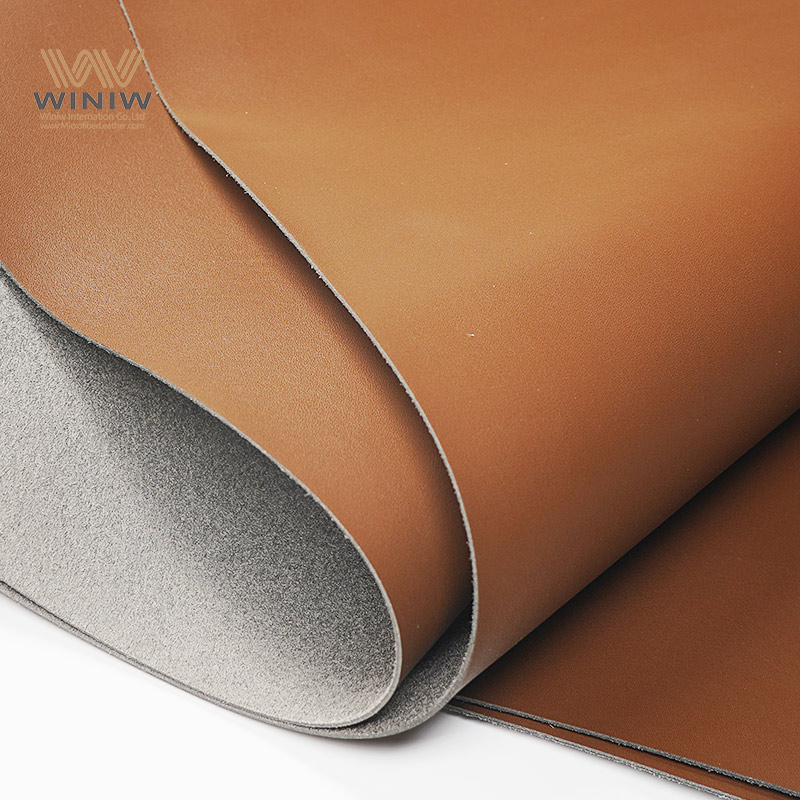
Prolungo la durata della pelle sintetica seguendo semplici abitudini. Pulisco le superfici con un panno umido per rimuovere polvere e liquidi. Evito prodotti chimici aggressivi e tengo la pelle sintetica lontana dalla luce solare diretta. Conservo gli oggetti in luoghi freschi e asciutti per evitare screpolature o sfaldature. Non riempio mai eccessivamente le borse né espongo la pelle sintetica a umidità eccessiva. Queste abitudini aiutano a mantenerne l'aspetto e la struttura.
Mantengo la vera pelle al meglio con una pulizia e un trattamento regolari. Utilizzo prodotti specifici per la pelle e applico un balsamo ogni pochi mesi. Tamponando immediatamente eventuali macchie, evito le macchie. Conservo gli articoli in pelle in borse traspiranti ed evito temperature estreme. Ruoto scarpe e borse in pelle per ridurne l'usura. Questi passaggi preservano la consistenza e aiutano la pelle a sviluppare una splendida patina.
Fattore | Descrizione |
|---|---|
Verifico se la pelle PU può resistere all'uso quotidiano e alla pulizia senza screpolarsi o sbiadire. | |
Impatto ambientale | Cerco soluzioni ecosostenibili con basse emissioni e fonti di approvvigionamento sostenibili. |
Texture e aspetto | Adeguo la finitura al mio stile, che sia liscia o strutturata. |
Compatibilità e vestibilità | Mi assicuro che il materiale si adatti al design del prodotto e possa essere modellato secondo necessità. |
Costi e tempi di consegna | Trovo un equilibrio tra qualità, budget e necessità di consegna. |
Reputazione del fornitore | Scelgo marchi con una solida reputazione in termini di materiali di qualità. |
Conformità e standard | Confermo che il prodotto soddisfa gli standard di sicurezza e qualità. |
Nota: prima di prendere una decisione definitiva valuto sempre la durata, il costo e l'impatto ambientale.
Ho scoperto che la vera pelle dura più a lungo della pelle PU, offrendo una durata senza pari e un aspetto classico. La pelle PU si distingue per la sua convenienza e facile manutenzione.
Vera pelle: Longevità superiore, patina unica, prezzo più alto, maggiore manutenzione
Pelle PU: Costo inferiore, pulizia semplice, meno durevole, senza animali
Consiglio di scegliere in base al proprio stile di vita, al budget e ai propri valori. Con la giusta cura, entrambi i materiali possono rivelarsi utili in diverse situazioni.
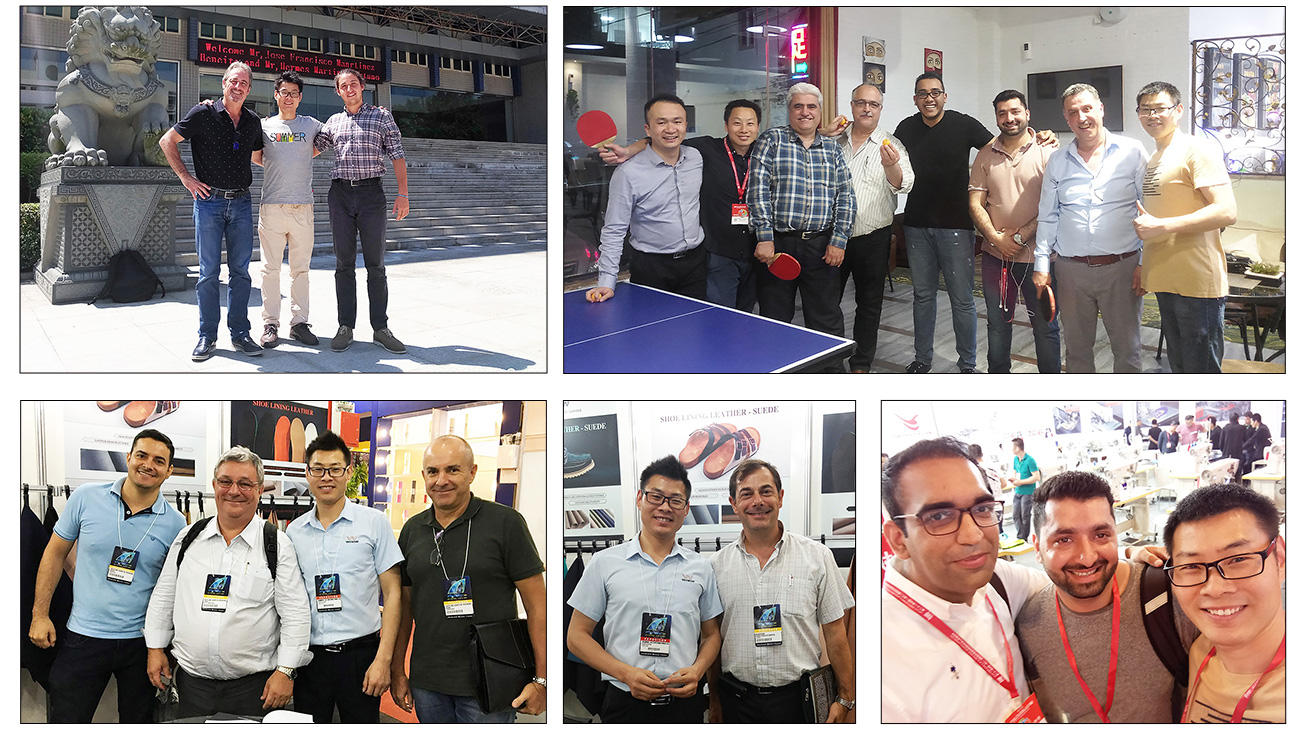
Controllo la consistenza e l'odore. La vera pelle è unica e ha un profumo naturale. La pelle sintetica è più liscia e ha un odore di plastica. Cerco anche le etichette o chiedo maggiori dettagli al venditore.
Per esperienza personale, la pelle sintetica tende a screpolarsi o a sfaldarsi dopo qualche anno, soprattutto con un uso intenso. Ho notato che questo fenomeno si verifica più rapidamente se espongo l'articolo alla luce solare o all'umidità.
Trovo che riparare la pelle sintetica sia difficile. Piccole crepe o scrostature possono peggiorare con il tempo. Di solito consiglio di sostituire l'articolo quando si presentano danni, poiché le riparazioni raramente ripristinano l'aspetto originale.
Pulisco la vera pelle con un panno umido e uso un balsamo ogni pochi mesi. Conservo i miei articoli in luoghi freschi e asciutti. Una cura regolare aiuta a prevenire secchezza e screpolature.
La pelle PU resiste all'acqua meglio della vera pelle. Asciugo rapidamente eventuali schizzi per evitare macchie. Tuttavia, so che troppa umidità può comunque causare danni o screpolature nel tempo.
Controllo le etichette dei prodotti e chiedo al venditore informazioni sui materiali. La pelle vegana di solito deriva da fonti sintetiche come PU o PVC. Cerco certificazioni o informazioni sul marchio che confermino che il prodotto non contiene materiali di origine animale.
Consiglio la pelle sintetica alle persone allergiche. La vera pelle può talvolta causare reazioni allergiche dovute alle sostanze chimiche utilizzate per la concia. La pelle sintetica ha una superficie sintetica che di solito non provoca allergie.
Evito di usare lo stesso detergente per entrambi. Per la pelle sintetica uso acqua e sapone delicato. Per la vera pelle, scelgo detergenti e prodotti specifici per la pelle per proteggerla.